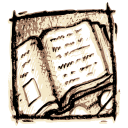 |
| Academic Publishing Wiki (Photo credit: Wikipedia) |
When McDonald’s came under sustained criticism from campaigners in the 1980s, the company responded by constructing a carefully crafted image of corporate social responsibility. It insisted that it cared about the cows and chickens that are eventually ground up into burgers and nuggets.
With the growing commercialisation of university research, academic journals are starting to do something similar.
A number of recent editorials in management journals have sought to highlight publishers' own roles in defending the standards of scholarship in face of the prevalence of academic misconduct.
An editorial in the latest issue of the Journal of Management Studies (JMS) focused on the growing problem of unethical behaviour in academic publishing, particularly in light of some recent retractions in the field. These have not only occurred in the JMS, but also in other outlets including The Leadership Quarterly.
The JMS editors wrote that the increasing pressure to publish “might lead scholars to engage in unethical conduct” such as plagiarism, misreporting results and fabricating data.
This pressure will be familiar to anyone who has witnessed the febrile environment of British academia during recent research assessment cycles. This has given rise to a lucrative football-style “transfer market” for elite research stars, coupled with the increasing prospect of demotion or redundancy for low performers.
With such rewards on offer for winning the publication game (and punitive measures awaiting those who fail), it is little wonder that unscrupulous players may seek out any opportunity to skew the system to their own advantage.
Tricks of the trade
But what the JMS editorial overlooks is a range of research practices that do not fall under the quasi-juridical category of “academic misconduct”, but which pose just as much of a threat to standards of scholarship. We are talking here, of all those “tricks of the trade” that scholars use to artificially increase their chances of publication in premier journals.
These tricks include writing papers with senior academics, even though they may do little more than put their name on the byline. Some academics may prominently cite the work of senior editors in a submission to the journal they edit.
Others establish multi-authorship cartels, whereby a group of scholars write one paper each but list the others as co-authors in order to double, treble or quadruple one’s output.
Some academics steer the work of doctoral students towards their own research area to cultivate future collaborators who will be willing to share their data and do the lion’s share of the work. Others pursue research that is potentially “citable” rather than interesting or important … and the list goes on.
The JMS editorial is silent on these matters, and it is not difficult to see why: top-ranked journals are complicit in reproducing these dark arts of academia. JMS editors were approached for comment for this article, but they said they preferred to wait until after publication before responding.
Hankering after prestige
More generally, recent research has exposed the levels of game-playing that have become commonplace in academia - not just among individual authors, but also among some senior editors of the leading journals.
Managing editors can have an eye on their journal’s place in the rankings, such as those for management studies journals, and may try to increase the journal’s impact factor and therefore its prestige. This can be achieved in part by publishing more frequently, publishing larger issues and publishing review papers.
But it can also be achieved by implementing a dual submissions policy: inviting big-name professors to submit their work outside the normal review process, thus boosting citations, while maintaining a ludicrously high rejection rate (another measure of journal “quality”) for everyone else.
Senior editors of some journals are also keen for authors to refer to research already published in their journal to further inflate its impact. This can result in high rates of internal citation - more than 60% in one prominent marketing journal. In such a context, the bold and unconventional are inevitably stifled while the bland yet citable prosper.
Entering the grey zone
The JMS editorial may well highlight the importance of “publishing ethics”. But what this amounts to is a formalistic tick-list of verboten practices. The journal now asks authors to confirm that their work is indeed their own and that it has not been published elsewhere.
But absent from the JMS checklist is any mention of behaviour that falls in between the cracks, that is neither wholly acceptable nor strictly outlawed - the forms of gamesmanship, in other words, that take place on an individual and institutional level.
We suggest that dividing publishing ethics into black and white has the effect of distracting attention away from “grey zone” practices that serve no other purpose except career advancement and professional advantage.
Plagiarism and other clear-cut forms of academic misconduct are undoubtedly damaging to the pursuit of knowledge. But far more insidious and pervasive are those tricks of the trade that undermine, in subtle and almost invisible ways, the integrity of scholarship.
We need more transparency about how scholars engage with every step of the publication process - from choosing their research topic and collaborating with co-authors to crafting a paper for submission and responding to reviewers’ recommendations. This debate begins by taking top-ranked journals to task for their own role in perpetuating bad academic habits.
This article was originally published on The Conversation. Read the original article.
No comments:
Post a Comment